Recently, a mother left a message asking for detailed methods of pediatric tuina for treating common illnesses. Therefore, we have specially selected simple and effective techniques that are easy to learn and have good feedback, hoping to assist mothers in need. If anyone has health-related questions they would like to learn about, please leave a message below! The editor will do their best to meet your needs!
Pediatric Wind-Cold Cold Acupoint Massage
Wind-Cold Cold: Symptoms include severe chills, mild fever, no sweating, headache, soreness in limbs and joints, nasal congestion, clear runny nose, cough with thin phlegm, pale tongue, and thin white coating.
Common Techniques:
① Press San Guan (Three Passes) acupoint 500 times.
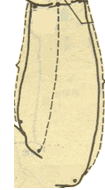
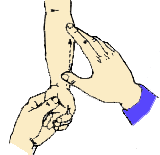
② Rub Wai Lao Gong (Outer Labor Palace) 100 times.
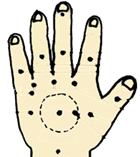
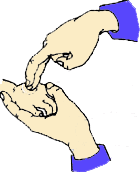
Acupoint: Wai Lao Gong (Outer Labor Palace)
Location: Center of the back of the hand opposite to Nei Lao Gong (Inner Labor Palace).
Technique: Use the tip of the thumb or middle finger to rub, about 50-100 times.
Indications: Wind-cold cold, abdominal pain, bloating, diarrhea, intestinal rumbling, etc.
③ Lift the muscle at Jian Jing (Shoulder Well) 5-7 times with both hands.

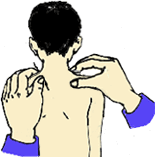
Acupoint: Jian Jing (Shoulder Well)
Location: Midpoint of the line connecting the spinous process of the 7th cervical vertebra and the acromion, in the shoulder muscle area.
Technique: Use both thumbs and index fingers to pinch the large muscle on the shoulder, called Jian Jing, about 5-10 times.
Indications: Cold, convulsions, shoulder and back pain.
④ Rub Er Shan Men (Two Gates) 50 times, applying moderate pressure and a quick speed.
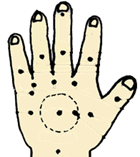
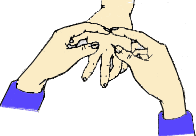
Acupoint: Er Shan Men (Two Gates)
Location: In the depressions on both sides of the base of the middle finger on the back of the hand.
Technique: Use both thumbs to pinch and rub, pinching 5-10 times and rubbing 100-300 times.
Indications: Convulsions, fainting, body heat without sweating.
Pediatric Wind-Heat Cold Acupoint Massage
Wind-Heat Cold: Symptoms include high fever, slight aversion to wind or cold, sore throat, dry mouth, sweating, flushed face, nasal congestion, yellow runny nose, cough with yellow phlegm, red tongue with red tips, and thin yellow coating.
1. Clear Lung Meridian 300 times, Clear Tian He Shui (Heavenly River Water) 100 times.
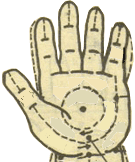
Acupoint: Lung Meridian (Lung Metal)
Location: Palm surface of the ring finger.
Technique:
① Clear Lung Meridian: Push towards the base of the finger, as shown in the image, about 200-400 times.
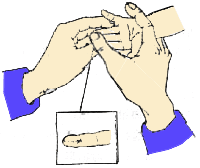
Indications: Fever, cough, wheezing, chest tightness, sore throat, etc.
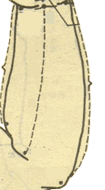
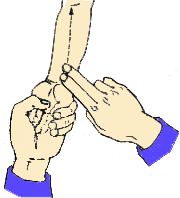
Acupoint: Tian He Shui (Heavenly River Water)
Location: Midline of the inner forearm, from the wrist crease to the elbow crease in a straight line.
Technique: Use the index and middle fingers to push from the wrist crease towards the elbow crease, about 100-500 times.
Indications: Fever, irritability, thirst, mouth sores, convulsions, and all heat syndromes.
2. Press and rub Da Zhui (Great Vertebra) for 1-3 minutes.
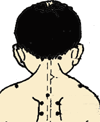
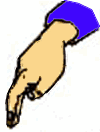
Acupoint: Da Zhui (Great Vertebra)
Location: Between the spinous processes of the 7th cervical vertebra and the 1st thoracic vertebra.
Technique: Use the tip of the middle finger to press and rub, or use the thumb and index, middle, and ring fingers to apply symmetrical pressure, squeezing Da Zhui. Press and rub about 100-300 times, squeeze 10-15 times.
3. Rub the sacrococcygeal area with the palm horizontally, to the point of warmth.
4. Lift Jian Jing 3-5 times.


Acupoint: Jian Jing (Shoulder Well)
Location: Midpoint of the line connecting the spinous process of the 7th cervical vertebra and the acromion, in the shoulder muscle area.
Technique: Use both thumbs and index fingers to pinch the large muscle on the shoulder, called Jian Jing, about 5-10 times.
Indications: Cold, convulsions, shoulder and back pain.
5. For cough with excessive phlegm, additionally press and rub Tian Tu (Heavenly Pivot) and Feng Long (Abundant Dragon) acupoints for 1 minute each, push Xiao Heng Wen (Small Horizontal Line) 100 times, and push Dan Zhong (Middle of the Chest) 100 times.

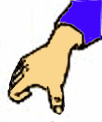
Acupoint: Tian Tu (Heavenly Pivot)
Location: Center of the suprasternal notch.
Technique: Use the thumb or middle finger to press and rub, about 15-30 times.
Indications: Cough, wheezing, chest tightness, nausea, vomiting, etc.
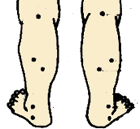

Acupoint: Feng Long (Abundant Dragon)
Location: 8 cun above the outer ankle, 1.5 cun lateral to the anterior border of the tibia, between the tibia and fibula.
Technique: Use the thumb or middle finger to rub, about 1-3 minutes.
Indications: Excessive phlegm, wheezing, chest tightness, etc.

Acupoint: Xiao Heng Wen (Small Horizontal Line)
Location: On the palm surface at the ulnar side of the little finger root.
Technique: Use the thumb or middle finger to press and rub, about 100-300 times.
Indications: Bronchitis, whooping cough, pneumonia, etc.


Acupoint: Dan Zhong (Middle of the Chest)
Location: Midpoint of the line connecting both nipples.
Technique: Use the tip of the middle finger to rub, about 50-100 times; use both thumbs to push from the Dan Zhong acupoint outward, about 50-100 times.
Indications: Chest tightness, cough, wheezing, palpitations, etc.
6. For high fever convulsions, additionally clear Lung Meridian 300 times, clear Heart Meridian 300 times, push Yong Quan (Bubbling Spring) 200 times, and clear Tian He Shui 500 times.
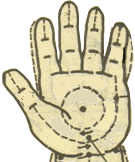
Acupoint: Heart Meridian (Heart Fire)
Location: Palm surface of the middle finger.
Technique:
① Supplement Heart Meridian: Rotate push on the surface of the child’s middle finger, as shown in the image, about 100-200 times.
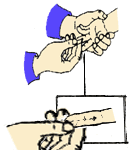
② Clear Heart Meridian: Push from the fingertip towards the base of the finger, as shown in the image, about 100-300 times.
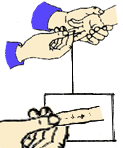
Indications: High fever, delirium, irritability, night crying, mouth sores, short and red urine, etc.
Acupoint: Yong Quan (Bubbling Spring)
Location: At the junction of the anterior 1/3 and 2/3 of the sole of the foot.
Technique: Use the tip of the thumb to push from the heel towards the toes, called pushing Yong Quan. See the image, push 100-500 times.
Use the tip of the thumb to press and rub on the acupoint, called rubbing Yong Quan, see the left image. Rub 30-50 times.
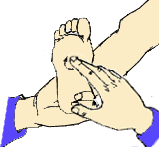
Indications: Fever, vomiting, diarrhea, five hearts heat.
Pediatric Acupoint Massage for Poor Appetite and Indigestion
1. For poor appetite, additionally rub Ban Men (Board Gate) 100 times, rub Zhong Wan (Middle of the Abdomen) for 3 minutes, and press and rub Zu San Li (Leg Three Miles) acupoint for 1 minute.
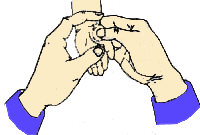
Acupoint: Ban Men (Board Gate)
Location: At the thenar eminence of the palm.
Technique: Use the tip of the thumb to press and rub at the midpoint of the thenar eminence, about 200-400 times.
Indications: Poor appetite, fatigue, food stagnation, blockage, abdominal distension, etc.

Acupoint: Zhong Wan (Middle of the Abdomen)
Location: 4 cun above the navel (midpoint of the line connecting the xiphoid process and the navel).
Indications: Diarrhea, vomiting, abdominal pain, abdominal distension, poor appetite, etc.
Technique:
① Rub Zhong Wan Method: Use the fingertip or palm root to rub on the acupoint, about 2-5 minutes.

②摩中脘法: Use the palm or four fingers to rub Zhong Wan, about 5-10 minutes.

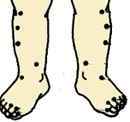
Acupoint: Zu San Li (Leg Three Miles)
Location: 3 cun below the outer knee eye, about one finger breadth lateral to the tibia.
Technique: Use the tip of the thumb to press and rub. About 1-3 minutes.
Indications: Abdominal distension, abdominal pain, poor appetite, diarrhea, constipation, fatigue, etc.

For children with spleen and stomach deficiency and poor appetite, commonly used techniques:
Supplement Spleen Meridian 100 times, push San Guan 100 times.
Acupoint: Spleen Meridian (Spleen Earth)
Location: Radial side of the thumb.

Technique:
Supplement Spleen Meridian: Slightly flex the child’s thumb, the practitioner uses the thumb surface to push along the radial side of the child’s thumb towards the palm root, as shown in the image.

Indications: Indigestion, diarrhea, vomiting, malnutrition, fatigue, etc.
Acupoint: San Guan (Three Passes)
Location: On the radial side of the forearm, in a straight line from the wrist crease to the elbow crease.

Technique: Use the thumb or index and middle fingers to push from the wrist crease towards the elbow crease, about 100-300 times.

Treatment of Pediatric Fever with Acupoint Massage
Clinically, children often have fever due to external pathogens, so if a child has a low fever, the above techniques can be tried. This is convenient and can avoid the side effects of medication.
Children with this type of illness often have a sudden onset, and tuina treatment is effective, but if parents find that self-treatment at home is not effective, they must go to the hospital for proper treatment.
Daily Precautions:
-
Pay attention to adjusting clothing according to weather changes to prevent colds and fevers.
-
Focus on reasonable feeding, avoid excessive consumption of fatty foods to prevent food stagnation, which can lead to fever.
-
During fever, drink plenty of water, and the diet should be light.
Generally, acute fever requires 1 to 3 days to recover, while children with prolonged low fever and ineffective medication may take longer to treat, as treatment for prolonged low fever usually needs to address the root cause of the illness.
High Fever: Normal body temperature is about 37.2°C. Unless the temperature exceeds 38.5°C (for adults) or 39°C (for children), there is no need to be overly anxious.
In fact, high fever itself is not a disease but a symptom that alerts you that there may be an illness present.
In fact, heat dissipation is beneficial to the body, as this internal defense mechanism helps eliminate foreign pathogens. If the temperature does not rise too high, it is better to let it dissipate naturally, as this helps expel toxins.
Preparations for Pediatric Tuina
1. Use massage mediums such as (baby lotion, massage oil, baby olive oil).
2. Mothers should trim their nails to avoid scratching the baby. Warm up your hands.
3. The room temperature should be appropriate. It is best to control the room temperature between 20 to 26 degrees Celsius, ensuring the baby is comfortable and not cold.
4. Mothers should be in a calm mood. Massage is a transmission of love, and the baby needs to feel your love.
Precautions for Pediatric Tuina
1. Create a soothing atmosphere. Whether at home or on the go, a mother’s massage is often the best comfort.
2. Do not massage when the baby is too full or too hungry. Avoid tuina during breastfeeding and within an hour after, but morning massages are acceptable.
3. The duration should not be too long. Generally, for routine health massages, 10-20 minutes is sufficient. Morning and evening sessions can be more relaxing. When the baby is sick, adjust according to the specific situation.
4. Do not force the baby. Massage is a transmission of love; do not let the baby resist. When the baby is sick and uncomfortable, they may not cooperate, so mothers should be patient.
5. When the baby has a high fever, do not perform other health massages except for fever-reducing techniques.
6. Do not massage areas with skin damage, infection, or allergies.
7. Generally, massage should start with the baby lying on their back and then on their stomach.
8. The techniques should be gentle, not heavy. Pediatric tuina requires even techniques, gentle strength, and steady depth.
Disclaimer: The content of the article, if it involves formulas or therapies, is for reference only. Please do not use it casually. The article and images are sourced from the internet. If there is any infringement, please contact for removal.
Share with those who care.
The more people see it, the more health there is!
Today's Recommendations

